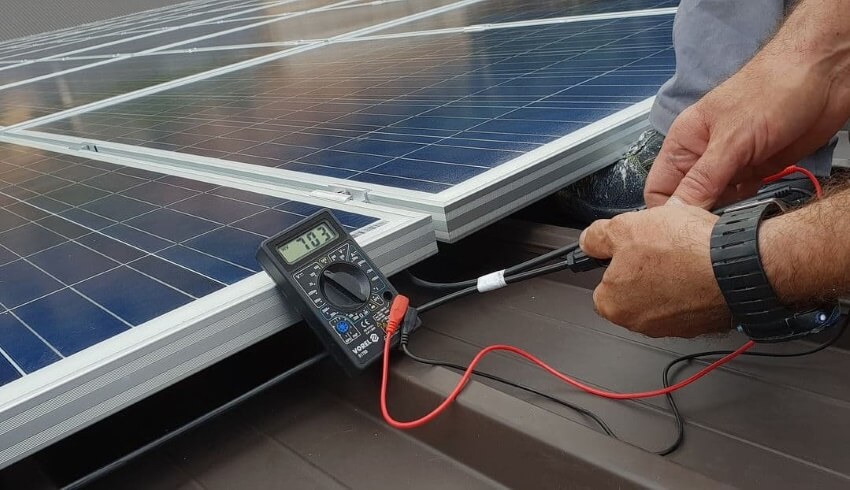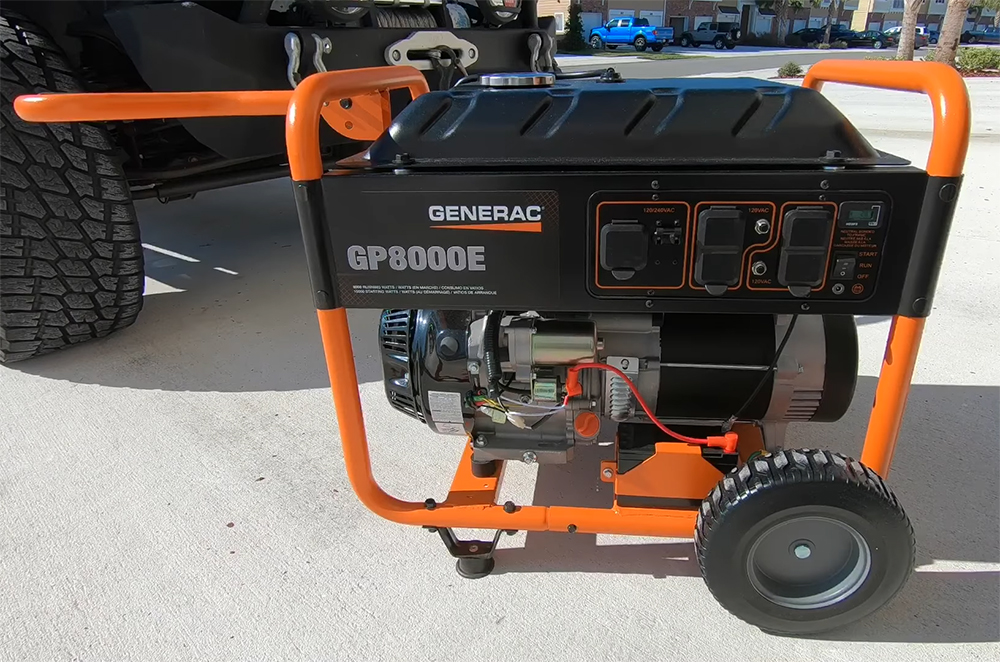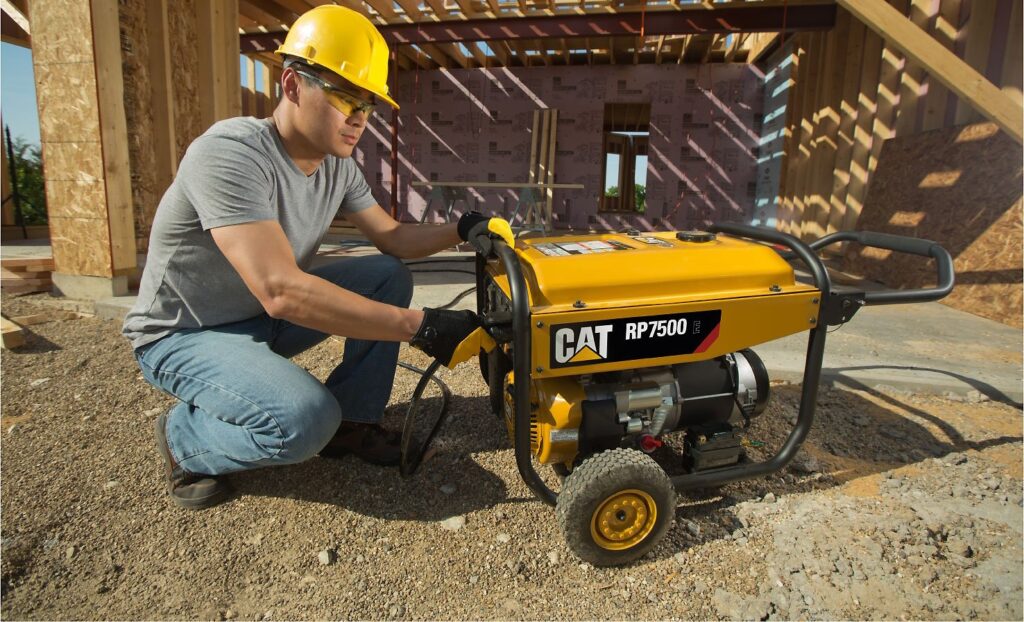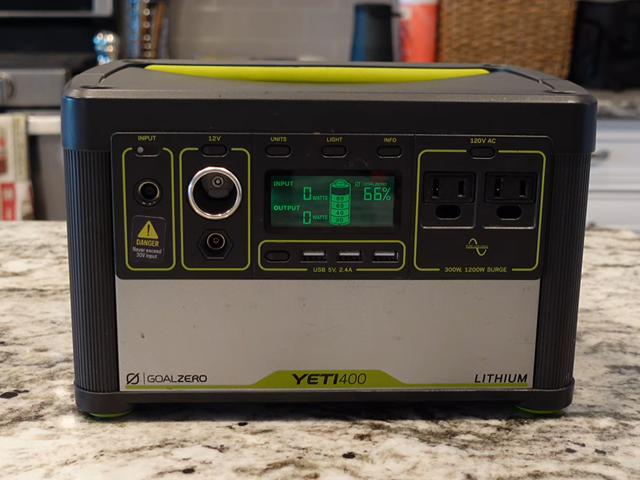
Going off the grid is a dream for many people. But to do it successfully, you’ll need a way to produce your own electricity. With the best off-grid solar system, you can ensure you have a reliable power supply whether you’re hitting the road or taking your home off the electrical grid.
We looked at 20 top off-grid solar systems on the market today. The Renogy 400W Solar RV Kit took our Editor’s Choice pick thanks to the fact that it easily mounts on most RVs and comes with highly efficient monocrystalline solar panels. This system can produce 2,000 watt-hours per day, which is just right for the majority of solar users. We also reviewed nine other off-grid solar systems that stand out from the pack to help you get the one that best fits your power needs.
We had a lot to think about when choosing the top systems. Voltage and wattage specs play an enormous role in how you’ll be able to use your solar system and what you’ll be able to power. Of course, total power capacity is also a major consideration. Finally, when it comes to buying a kit, we wanted to make sure that you’re getting all the components you need to run your system. You’ll find our picks for the ten best off-grid solar kits below, followed by detailed reviews of each system. Keep reading for our buying guide, which covers everything you need to know about getting the right solar panel kit for you.
What’s included: (4) 100W 12V monocrystalline solar panels, 30′. 10AWG MC4 adapter kit, 16′. 10AWG tray cable, (3) pairs of branch connectors, (4) sets of Z brackets
This 400-watt off-grid solar system from Renogy is one of the best kits we’ve seen. It’s specially designed to work seamlessly with RVs, although you can use it just as well for boats or for off-grid buildings and appliances.
The kit comes with four 100-watt monocrystalline solar panels, each of which has an efficiency rating of around 21%. In full sunlight, the panels can produce up to 2,000 Wh of power per day. We loved that the system includes a bypass diode before the battery charger, ensuring that you won’t lose all your power delivery if one of the panels is shaded for part of the day.
The 30-amp PWM battery charger is nothing to write home about, but it does its job well. RV users especially liked it because the unit is built to mount flush to walls and has a small LCD screen displaying its status. That ensures it is out of the way and easy to monitor.
One of the really neat things about this kit is Renogy’s cable entry housing. This is a small, watertight housing unit that’s designed to sit on top of your RV. It keeps the area where cabling runs from your panels into your vehicle weatherproofed, which solves one of the trickiest problems that RV owners face when installing solar systems.
The only thing that RV owners and other users found missing from this kit is a more adjustable mount for the solar panels. With the included mount kit, it’s easy to place the solar panels flat on a surface like your RV’s roof. However, there’s no way to lift the solar panels to catch morning or late-day sun. This is particularly a problem if you mostly need power in the fall or spring, when the sun spends less time directly overhead.
What’s included: (16) 195W solar panel, 3,500W 48V-110V inverter, (4) string PV combiner boxes, controller, Y branches, solar cables, Z brackets, (4) 12V 100AH batteries
This massive solar panel kit from ECO LLC is designed to help you bring a small building or even your entire home off the grid. It comes with fully sixteen 195-watt solar panels – a total of 3,120 watts – each with a working current of nine amps. These are designed to wire together in series of four panels each. Each of those series delivers its power to a series combiner box, which in turn are wired to a solar charge controller.
This design is extremely helpful because it gives you flexibility over how you want to arrange your panels. You can put four panels in a spot that’s sunny early in the day, and another four in a spot that’s sunny late in the day. Since each group of four is wired to a series combiner and the charge controller, shading of one set of panels won’t overly impact your power delivery.
The solar charge controller is a PWM model. It’s capable of working at 12, 24, or 48 volts, which is nice since this gives you plenty of flexibility if you want to upgrade your system with more panels or more batteries in the future. As it is, the kit comes with four 12-volt lead-acid batteries. They’re not necessarily the most efficient compared to lithium-ion, but they get the job done while keeping the cost of this kit within reason.
Notably, the kit also comes with a 48-volt DC inverter. This is appropriate for handling the four included batteries, but you’ll need to upgrade it if you want to move to larger batteries in the future.
In all, the system is capable of delivering up to 9,000 Wh of power per day – more than enough for the majority of uses other than powering an entire off-grid homestead.
What’s included: (1) 100W solar panel, 40A Li MPPT charge controller, mounting Z brackets, 20ft 10AWG MC4 adaptor kit, 8ft 10AWG tray cables
This 100-watt solar kit from Renogy is small, but it’s meant to be the start of a much larger system. It comes with just one 100-watt monocrystalline solar panel with an impressive rated efficiency of 21%. Just as important is the 40-amp MPPT solar charge controller, which boasts a maximum power transfer of 97% so you don’t lose nearly any of your available wattage.
These two components push up the price of this starter kit relative to solar systems that come with a lot more, but they’re excellent starting points for a highly efficient system. In fact, Renogy rates this kit as expandable up to 800 watts based on the amperage of the charge controller.
Notably, this kit doesn’t come with batteries or a power inverter – you’re left to get these on your own. That can be a good thing, though, since you have the freedom to choose components that best match your power needs. The MPPT controller is compatible with most types of batteries, including lead-acid and lithium-ion batteries.
All that said, you will need to spend some time figuring out how to create the optimal solar system with these starting components. This isn’t a plug-and-play kit like many of the other off-grid solar systems we reviewed. RV owners will also want to note that this kit doesn’t come with the weatherproof cable entry housing, which Renogy provides with its larger 400-watt solar kit.
What’s included: solar panel; 20A charge controller; removable MC4 connector cables; alligator clamps cables
This simple and portable folding solar system is a great choice for off-grid power on the go. The tri-part solar panel folds up into a self-contained carrying case, which is extremely convenient for carrying around. When you unfurl the panels, you have the option to lay them flat or pull out small legs to tilt the panels up towards the sun. The legs are a little shaky, but users found that they work well unless it’s very windy out.
The three panels together are capable of producing 120 watts, for a maximum of 400 Wh of charging per day under very sunny conditions. The panels come with a set of cables to connect to the included PWM charge controller. From there, you can use the alligator clamps to connect directly to a battery (not included) and start charging. If you want AC power, though, you’ll also need to purchase an inverter.
The charge controller is nice in that it’s rated for both 12-volt and 24-volt power. That makes the system expandable if you ever decide to add additional folding solar panels or a second battery. Of course, there’s something of a trade-off here – the larger and more powerful you make your solar system, the less portable it becomes.
As the system is designed, users found that it can be set up in about one to two minutes. All the cabling can remain attached when not in use, so you simply have to pull everything out of the bag to set the panels up in the sun and connect the battery. The one change that users recommended was longer cables, so that you can put the panels further away from your battery or appliances. Just mind the voltage drop when using longer cables than ACOPOWER provides.
What’s included: 20W monocrystalline solar panel; 10A solar charger controller; 6.5ft extension cable with battery clips; 6.5ft extension cable with O-ring terminal
This small solar panel kit from TP-solar is designed to power lights and other small appliances. It comes with just a single 20-watt solar panel and a 10-amp solar charge controller. All told, the capacity is just 100 Wh per day under optimally sunny conditions.
Many users bought the kit to charge a car battery, since you don’t need any additional components to accomplish that with this system. It comes with a set of battery clamps that connect to the charge controller, and the controller is compatible with most common types of batteries including lithium-ion. However, for more advanced applications, you may need to buy a battery, inverter, and cabling to add to this kit.
We liked that TP-solar built this kit to maximize efficiency. The solar panel is a monocrystalline design, for example. The cables are also relatively short to prevent a voltage drop during power transfer. The solar charge controller is rated for both 12 and 24 volts, which is nice if you plan to add an additional panel to your system in the future.
For such a small system, users were hoping that the panel would be foldable or otherwise more portable. However, they did note that it’s small enough to easily stow away inside a car or RV for road trips. The kit doesn’t come with any mounting supplies, so you’ll need to do some extra work if you plan to permanently mount the panel to the roof of a boat or RV.
What’s included: solar panel, 1800W solar generator with built-in controller, 50ft power panel
This solar generator from Nature’s Generator is essentially a self-contained off-grid solar system. The generator contains a battery, charge controller, and inverter all together.
The advantage of this system is that it’s highly portable and easy to use. There’s no setup involved and you don’t have to worry much about matching the voltages or wattage of your various system components. However, on the other hand, you give up a lot of flexibility with the generator design. You can’t easily expand your system in the future to add more power by swapping out components. There’s also no way to easily add more solar panels. Compared to more standard off-grid solar systems, the generator design is very expensive.
That said, there’s a lot to like about this solar generator for portable power applications. The onboard battery can hold up to 720 Wh on a single charge and deliver up to 100 Wh continuously when the solar panel is in full sunlight.
The 200-watt solar panel is set up on wheels and is tilted up, making it easy to reposition it so you’re maximizing power generation throughout the day. The solar panel can be up to 50 feet away from the generator, so you don’t have to stand in the sun next to your panel when using your appliances.
Users also appreciated the outlets available for power onboard this generator. It has three 120-volt AC outlets, a pair of USB ports, and a 12-volt charging outlet for DC power. Plus, the LCD screen clearly displays how much power you have remaining in the battery and how close you are to your maximum power delivery.
One major downside to this system is that Nature’s Generator cover it with just a one-year warranty. Given how much it costs and the fact that most other off-grid kits come with multi-year warranties, that’s pretty short.
What’s included: two 100W Mono Solar Panels, charge controller, extension cables, branch connectors, Z-brackets
If you’re on a tight budget, this solar panel kit from SUNGOLDPOWER is a great choice for you. It offers two 100-watt solar panels and a 20-amp solar charge controller at a very affordable price point. Even though this product is budget-friendly, it uses monocrystalline solar panels. The charge controller is a PWM model, so it’s probably the part of the kit where some compromises were made. However, the vast majority of users don’t mind the small drop in power on partly sunny days.
The only extra thing you need to run this solar system is a battery, although you might also need an inverter depending on your power application. The panels come with a standard mounting kit that allows you to place them flat on any surface, including the roof of a shed or RV. Keep in mind that the solar controller is only rated for 12 volts, which can somewhat limit your ability to expand this system in the future.
Overall, the system is a good entry-level kit for off-grid solar. It’s a little bit difficult to expand and isn’t all that efficient. But the low startup cost means that you can learn the ins and outs of off-grid solar, and components like the panels are reusable for future solar installations.
What’s included: 200W solar panel, charge controller, 20Ah 12V LiFePO4 Battery, 600W 12V Pure Sine Wave Inverter, Z-shape mount brackets
For first-time solar users, getting a ready-to-go kit that comes with everything you need can be a huge help. That’s exactly what this solar panel kit from ECO-WORTHY promises. It comes with a solar panel, charge controller, battery, and inverter, along with all of the mounting pieces and cabling you need to tie it together. Considering how much is included, the price for this kit is also extremely attractive.
This solar system has two 100-watt polycrystalline solar panels, so don’t expect a huge amount of power. The system is rated for a maximum of 800 Wh, and the inverter is rated to handle up to 600 watts. The 30-amp PWM charge controller is only rated for 12-volt solar systems, and it comes with a 12-amp lead-acid battery.
While it’s possible to expand this system slightly, you’re limited by the fact that you can’t switch to 24 volts without replacing the charge controller. In theory, the most power you can get at 12 volts is just 300 watts.
The panel can be mounted on an RV or building, but the mount kit only allows for a flat, flush position. Users found that installation is relatively easy, although they reported mixed results when trying to contact ECO-WORTHY’s customer service team for help with the process.
We were also surprised to find that the warranty on this solar system is quite short. ECO-WORTHY offers one-year replacement for the charge controller but doesn’t specify a longer warranty for the solar panel. While this isn’t a huge deal given the price of the kit, it’s a bit disappointing considering that many competitors offer more robust warranty policies.
What’s included: (4) 100W polycrystalline solar panels, solar charge controller, 40ft 12 AWG solar cable, solar connectors, solar mounting hardware, (4) BattaMax 100Ah 12V batteries with 2/0 AWG Interconnect battery cables
If you’re looking for a ready-to-go solar panel kit for RVs, this 400-watt package from WindyNation is it. The kit contains four 100-watt solar panels and is capable of delivering up to 1,600 Wh of power under sunny conditions.
The panels are polycrystalline, so they’re significantly less efficient than the panels included with the similar kit made by Renogy. But then again, the price point is lower, which is a major plus for RV owners trying out solar for the first time.
This kit includes everything you need to power your RV, with the notable exception of an inverter. It comes with four 12-volt, 100Ah lead-acid batteries, a charge controller that mounts on the wall inside your vehicle, and all the supplies you need to mount the panels flat on the roof of your RV. The 30-amp PWM charge controller is user-adjustable so that you can control how your system cycles power through the batteries, which is nice.
We actually like the fact that an inverter isn’t included, since you can choose a 48-volt inverter or a larger inverter depending on whether you plan to expand the power output of this system in the future. In addition, it’s worth noting that you can purchase this kit without the four batteries if you already have your own deep-cycle batteries available.
Users noted that WindyNation’s customer support is excellent, which is a major help when setting up this solar kit. The system comes with instructions and there are more detailed tutorials available on WindyNation’s website. Even better, you can call in to the company to get help with troubleshooting.
What’s included: (2) 195W solar panels; (2) sets of Z mounting brackets; charge controller; 24V–110V 1500W pure sine wave Inverter; (2) 100Ah batteries; (2) 16.4ft 12AWG solar cables; 6.56ft 13AWG tray cable
This simple solar kit from ECO-WORTHY is designed to make collecting power from the sun easy. It’s a versatile kit, just as suitable for RVs and boats as it is for an off-grid building.
Whereas many of the other 400-watt kits we looked at come with four 100-watt panels, this system uses two 195-watt panels. That’s not a huge difference for most users, but make sure you have the necessary space to install these two large panels.
One of the nice things about having just two panels is that you only need two batteries. The system comes with two 100Ah lead-acid batteries and a 60-amp PWM solar charge controller. That’s a more powerful solar charge controller than what’s included with most comparable kits, which is important if you want to scale up your power later. The kit also provides a 1,500-watt inverter that’s capable of taking in DC electricity from the batteries up to 24 volts.
Users love that this solar panel kit is expandable. If you run it at 12 volts (using the included batteries), you can add panels to bump your power up to 1,080 watts total. If you swap out the batteries for 24-volt units, you can push the system all the way to 2,160 watts. The charge controller is compatible with most standard battery types, including lithium-ion batteries. However, there’s no way to purchase the kit without the two included 12-volt lead-acid batteries.
While this solar system comes with almost everything you need, keep in mind that it is missing a few cables. You’ll need to order extra wiring to connect the inverter and charge controller to each other and to the batteries. This isn’t expensive, but it can be disappointing to have the kit arrive only to find out there are a few wires missing.
Now that you’ve read about our ten favorite solar panel kits on the market today, how do you decide which one can best fulfill your power needs? Our buying guide will cover all of the essential components of an off-grid solar system, including what they do and how to choose the model that’s right for you. We’ll also answer some common questions that first-time solar users have about off-grid kits.
The best place to get started with figuring out which solar kit is right for you is to understand all the components that make up your off-grid solar system. Here, we’ll dive into detail about everything from the panels to the inverter and battery, so you know exactly what you need to get efficient, sustainable power from your system.
Solar panels are probably the first component you think about when considering an off-grid solar system. There are a couple differences among panels, but the most important is their wattage rating. Wattage is typically related to size, and panels can range from 20 watts to 120 watts or more.
Some solar kits give you more power by combining two small panels, while other kits opt instead for one large solar panel.
One of the important things to look for when choosing a panel is its efficiency rating. This will depend on the type of material the panel is built from – as you might expect, cheaper solar panels are typically less efficient. As a rule of thumb, the average efficiency of solar panels is around 18%.
Panels should last up to 25 years before they need to be replaced, but it’s not uncommon for faulty panels to be produced. If your solar kit manufacturer provides a warranty, make sure that covers the solar panels.
A Solar charge controller manages the transfer of power from your solar panels to your battery, where the produced power is stored until you’re ready to use it. The main function of a charge controller is to prevent deep cycle batteries from overcharging when the sun is out and from sending power backwards to the panels overnight.
There are two different types of solar charge controllers: pulse width modulation (PWM) and maximum power point tracking (MPPT) controllers.
The majority of solar controllers included in the kits we reviewed are PWM controllers. With a PWM controller, the voltage of your panels has to match the voltage of your battery. That is, if your kit comes with a 12-volt solar panel, you should be using it with a 12-volt battery. For most users, this shouldn’t be a problem unless you already have a battery.
MPPT controllers are “smart” controllers in that they can drop the voltage from your panels to match the voltage of your battery throughout the day. This type of controller is included with the Renogy 100W solar kit. The advantage of using an MPPT controller as opposed to a PWM charge controller is that MPPT allows you to use high-voltage panels, such as the kind designed for a rooftop installation.
For most RV-based off-grid systems, a PWM controller is cheaper and makes sense. But, if you’re planning to add panels to your kit or to increase the size and voltage of the panels, it may make more sense to use a MPPT controller.
A solar inverter converts the power coming from your solar panels or battery, which is direct current, to alternating current that most appliances require. In most off-grid solar systems, the solar inverter is the component that you’ll actually plug devices into or that you will wire into an existing electric system.
Several of the solar panel kits we reviewed, including the ones from ECO LLC and ECO-WORTHY, come with inverters. However, most kits leave you to get your own inverter because it needs to be adapted to work with your battery and to have enough capacity for your devices.
When it comes to choosing an inverter, you ideally want to get one that has the same wattage capacity as your solar panels. That way, you’ll operate at the highest efficiency when drawing power form your system.
Also keep in mind that there are two different types of solar inverters: string inverters and microinverters. String inverters capture all the incoming DC power of your solar panel array and convert it in a single unit. Microinverters attach to each individual panel and then combine the converted AC power for delivery.
String inverters are what the vast majority of off-grid solar systems will need. They’re significantly less expensive than microinverters and offer plenty of flexibility for adjusting your system demands. Many string inverters even have charge controllers built in.
However, when you use string inverters, your solar array is only as efficient as your worst-performing panel. If you have one panel in your array that gets shade for part of the day, such as in a stationary off-grid panel array, it’s a good idea to use microinverters. These enable maximum efficiency when your panels aren’t all capturing the same amount of sunlight.
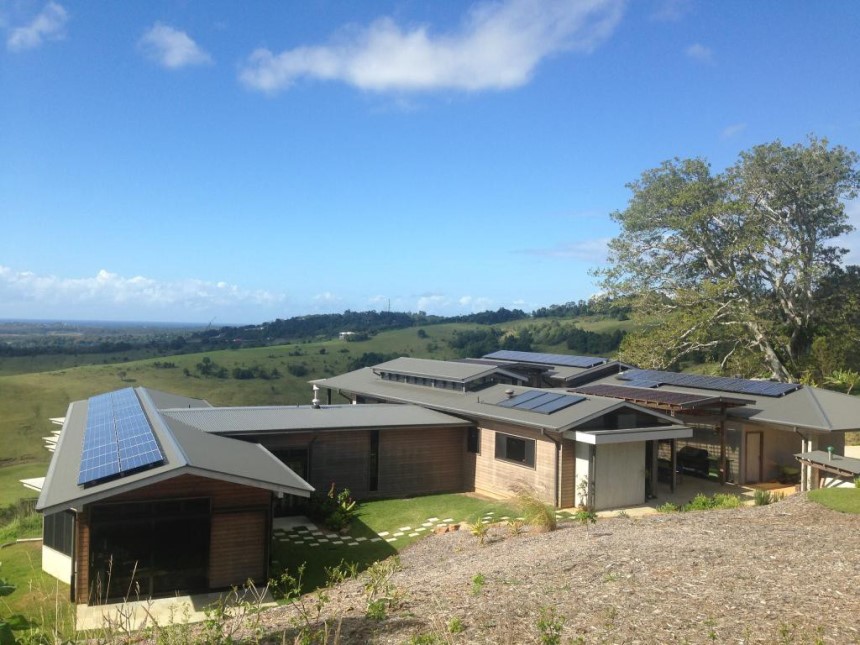
Some, but not all, off-grid solar systems come with batteries. The 400W and 100W Renogy kits, TP-solar, ACOPOWER, and SUNGOLDPOWER kits all leave you to buy your own battery. Either way, it’s important to understand how batteries differ and what battery will best suit your needs.
First and foremost, the voltage of your battery should match the voltage of your solar panels. This doesn’t necessarily need to be the case if you’re using an MPPT solar charger. However, if you’re buying your own battery, it’s a good idea to keep voltages consistent across your solar system.
One of the important things to think about when considering a battery is its total capacity and power capacity. The total capacity, measure in watt-hours, is the maximum amount of power a battery can store. The power, measured in watts, is the maximum amount of power a battery can deliver over a one-hour period. How much capacity and power you need depends on what you plan to run with your solar system.
How are you planning to mount your solar panels somewhere that they can adequately capture sunlight? That’s where the rack system comes in. Many off-grid solar system kits come with racks designed to fit on most RV roofs, since that’s a popular use for these kits. But, in many cases, you can also install these racks on a home roof or on a boat.
Make sure you look carefully at the brackets and mounting rods that come with your off-grid solar kit. Not all brackets will fit all layouts, so it’s important to measure the area where you plan to put your system and check that against the measurements of your panels and the included brackets.
It’s also worth noting that not all off-grid solar systems are meant to be permanently mounted on a home or vehicle. Kits like those from Nature’s Generator and ACOPOWER are designed so that the panels are portable and can simply be stood out to face the sunlight. These systems are nice because they don’t require permanent installation and you don’t have to worry about getting a rack system. But they’re less than ideal if your goal is to provide solar power for a vehicle or homestead rather than something temporary like a campsite or tailgate.
Another component of your solar panel kit that’s important to think about is the included cabling. Cables are required to connect your solar panels to the charge controller, the charge controller to the battery, and the battery to the power inverter.
Most solar kits that come with a charge controller come with at least the cables required to connect the panel to the controller and the controller to a battery. But, for kits that don’t also include a power inverter, you likely have to purchase the cables to connect the battery to the power inverter separately as well. For example, the ECO LLC kit, which comes with a 1,500-watt inverter, comes with all the cables required for setup except those to connect the power inverter to an existing electrical grid.
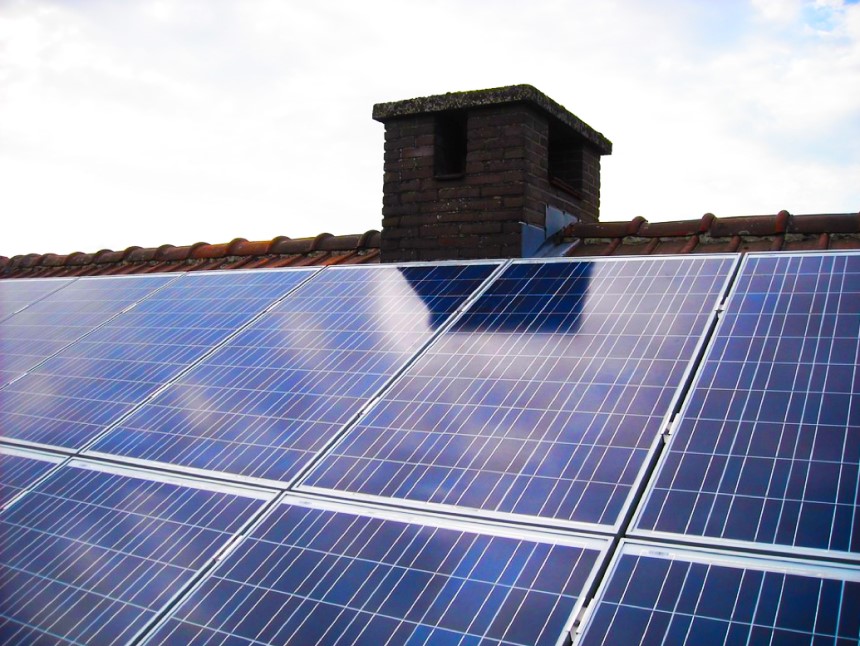
We’ve covered most of the components that are included in solar panel kits, but there’s one extra thing to think about when choosing the right solar system for you: the warranty. Solar systems are a major investment, and it’s certainly not unheard of to get a faulty panel or inverter.
A warranty ensures that you are protected in the event that any one of the many components of your solar panel kit doesn’t work up to its specifications. Warranties can range widely, from just one year to up to five years for the Renogy 100W and WindyNation 400W solar systems. Also be sure to check whether the warranty on any individual components, like the battery or power inverter, is shorter than the general kit warranty.
Figuring out how much power you need to get from your off-grid solar system is a tricky task. Ultimately, this comes down to what you plan to power with your system and whether you expect to have other power sources along the way. Creating an off-grid solar system for an RV is very different, in terms of the power requirements, from creating an off-grid solar system for a homestead.
If you have a set of batteries handy, you can actually figure out just how much power you need. In this case, power your RV or homestead off batteries alone for one to two days and then measure how much charge is left. The amount of power, in amp-hours, you used per day is how much power you need. You can convert this to solar panel wattage using the rule of thumb that a 100-watt panel produces about six amps of power per hour in full sunlight.
Most RV owners can get away with around 100 to 200 watts’ worth of solar panel output in reasonably sunny conditions. However, if you have a lot of electrical appliances, you might need another 100-watt panel to ensure you’re always charged.
Homesteaders, on the other hand, might need as much as several thousand watts’ worth of solar panel output. If you’re building a solar panel array for an off-grid residence, it’s a good idea to build as flexible a system as possible – one that you can add panels to easily if you find out that you need more power.
Setting up a solar power system isn’t all that complex. Generally speaking, the solar panels are connected to a battery or bank of batteries through the charge controller. The power inverter is connected to the power bank, and from there you can either plug appliances in directly or wire the inverter to a home or RV electrical grid.
The placement of the panels relative to the sun and relative to the rest of the system is important. You want the panels to get the most sunlight possible. Keep in mind that for string inverter systems, having a single panel in the shade can decrease the performance of your entire system. You also don’t want the panels to be too far from your charge controller and batteries. The greater the wire distance, the more voltage you’ll drop over the length of the cabling.
Our three overall favorite off-grid solar systems on the market today are the Renogy 400W Monocrystalline Solar RV Kit, the ECO LLC 3000W Off Grid Solar Panel Kit, and the WindyNation 400W Solar Kit.
The ECO LLC kit is the best option for large RVs, homesteads, or small buildings. It provides a huge amount of power thanks to 16 solar panels, as we love the fact that you can arrange the panels in sets of four using the included string power combiner.
The Renogy and WindyNation solar systems are both designed for RVs, although they can be used for a much wider variety of applications. Both provide 400 watts, but there are a couple important differences between them. The WindyNation kit comes with four batteries and a five-year warranty. We think the Renogy kit is the best off-grid solar system because even though it lacks batteries, it comes with highly efficient monocrystalline solar panels and a weatherproof housing for running cables through the roof of an RV.

